W4A Day One: Food security, consumer demand, and changing the way Africa sees wheat
It’s day one at Wheat for Food Security in Africa, and Cobus Le Roux has just finished outlining the production, constraints, market, and future of wheat in Southern Africa. This morning participants enjoyed keynote speeches from Kwadwo Asenso-Okyere (IFPRI), Nicole Mason (Michigan State University), and Bekele Shiferaw (CIMMYT).
One of the key issues raised was just how much of their precious little foreign expenditure African countries must spend on imports. In 2010, over 12.5 US$ billion was spent to import 32 million tons of wheat to Africa. Many of this morning’s speakers posed the question: “What if that money was spent on wheat research instead? How much money would it take to improve wheat and agronomy so that that import bill is reduced or even eliminated?”
Food security was a buzzword on everyone’s lips this morning. Food aid does not imply food security, merely that people have enough to eat at that moment. But what about next year? What happens then? And what if the countries who supplied food aid this year are unable to do so next year? According to Kwadwo, food security is a right, not a priviledge. And the economics makes sense too; a woman who does not get enough, nutritious food during pregnancy is likely to give birth to an underweight, undernourished baby. If this baby does not get healthy food on a regular basis, particularly in the first two years of childhood, it is more likely to grow up to be an underweight, undernourished adult. This underweight, undernourished adult will not be as strong, not as able to work, more likely to get ill. We need healthy, strong adults if we are to create productive, prosperous countries. Whilst the high food prices in 2007/08 and 2010/11 caused shockwaves around the world, they produced some small benefit in propelling food security to the forefront of the global agenda.
Producing more wheat could help African countries achieve food security. Everyone at the conference is in agreement that demand for wheat in Africa is increasing. Traditionally in Africa, wheat has been the food of the rich; but now that incomes are on the rise, wheat is being eaten also by the traditionally lower- and middle-classes. An increasingly urban population is demanding more processed food, requiring less preparation time; this food is generally wheat-based, such as bread. And whilst the price of wheat is on the rise, the increase has not been as dramatic as for some other staple crops, meaning that it is becoming an ever more attractive option for consumers.
“So,” asked Bekele, “There is obviously a big demand for wheat in Africa – what can we do about the supply?”
And that is the question we are here to answer, starting this afternoon with presentations on the current wheat situation in different parts of Africa and round-table discussions addressing many aspects of wheat production, constraints, and the value chain in Africa. This is not an opportunity for a jolly to Addis Ababa – the participants are here to do a job. We are here to influence and improve the future of wheat in Africa, and that is no small task.
Tomorrow there will be more specific discussions on the things currently constraining African wheat production: abiotic and biotic factors, wheat markets and seed systems, and wheat quality. You can follow all the action on twitter using #W4A, or check back here tomorrow for a full summary.
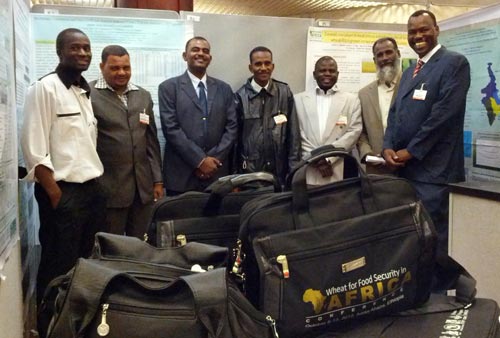


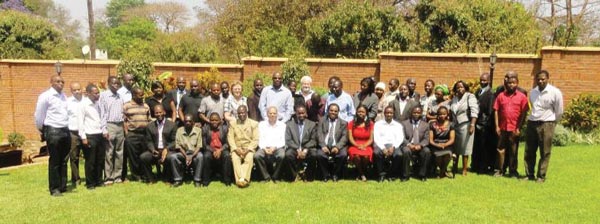
 The Hill Maize Research Project (
The Hill Maize Research Project (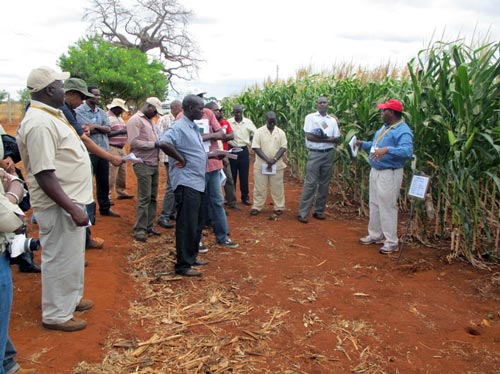 Twenty-nine drought-tolerant, early maturing, disease-resistant hybrids developed by the Water Efficient Maize for Africa (WEMA) project are getting ready to be released, a huge success for WEMA and all its stakeholders. “The 29 hybrids advanced to national performance trials is a record release by an entity in Africa in all times. These high performing hybrids yield 20–35 % more grain under moderate drought compared to 2008 commercially available hybrids,” said Stephen Mugo, CIMMYT principal scientist and co-chair of the WEMA Product Development Team. “Let us seize the technological opportunities that are there to boost productivity and people’s welfare,” he added. The white hybrids resistant to stem borers, maize weevils, and large grain borer, and to diseases such as grey leaf spot, northern leaf blight, and maize streak virus will complement other drought tolerant hybrids developed and released by the Drought Tolerant Maize for Africa (
Twenty-nine drought-tolerant, early maturing, disease-resistant hybrids developed by the Water Efficient Maize for Africa (WEMA) project are getting ready to be released, a huge success for WEMA and all its stakeholders. “The 29 hybrids advanced to national performance trials is a record release by an entity in Africa in all times. These high performing hybrids yield 20–35 % more grain under moderate drought compared to 2008 commercially available hybrids,” said Stephen Mugo, CIMMYT principal scientist and co-chair of the WEMA Product Development Team. “Let us seize the technological opportunities that are there to boost productivity and people’s welfare,” he added. The white hybrids resistant to stem borers, maize weevils, and large grain borer, and to diseases such as grey leaf spot, northern leaf blight, and maize streak virus will complement other drought tolerant hybrids developed and released by the Drought Tolerant Maize for Africa ( On 21 September 2012, CIMMYT-El Batán opened its doors to 280 students, accompanied by their professors, from 14 Mexican universities for the 6th “Open Door” event. This year, students visited the wheat and maize programs, conservation agriculture demonstration plots, the germplasm bank, and biotechnology and cereal laboratories.
On 21 September 2012, CIMMYT-El Batán opened its doors to 280 students, accompanied by their professors, from 14 Mexican universities for the 6th “Open Door” event. This year, students visited the wheat and maize programs, conservation agriculture demonstration plots, the germplasm bank, and biotechnology and cereal laboratories.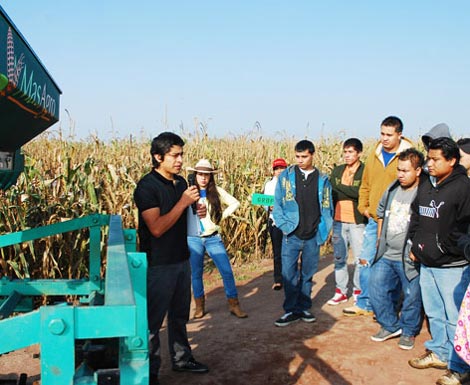 Ma. de Lourdes de la Isla, emeritus researcher and professor at Colegio de Postgraduados (CP), sent a thank-you letter to the CIMMYT Training Office, saying the event“provided a very valuable source of knowledge.” She also praised the professionalism of the organizers and presenters. Special thanks to all the presenters, and to Daniela Flores Castillo and Norma Hernández for coordinating the logistics.
Ma. de Lourdes de la Isla, emeritus researcher and professor at Colegio de Postgraduados (CP), sent a thank-you letter to the CIMMYT Training Office, saying the event“provided a very valuable source of knowledge.” She also praised the professionalism of the organizers and presenters. Special thanks to all the presenters, and to Daniela Flores Castillo and Norma Hernández for coordinating the logistics.
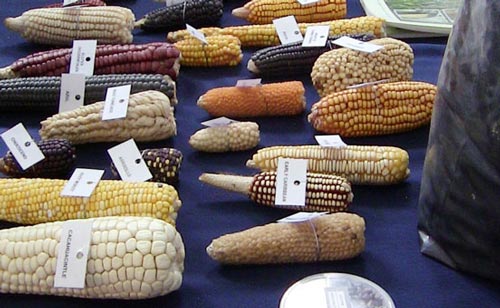 National Service Seed Inspection and Certification (
National Service Seed Inspection and Certification (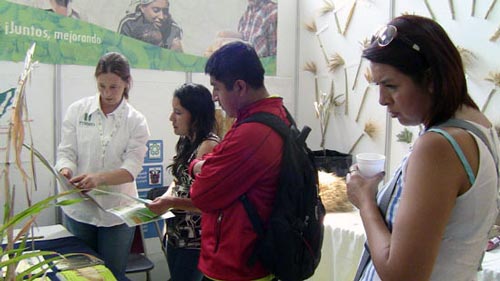 CIMMYT participated in the fair through its Seeds of Discovery (SeeD) initiative under the Genetic Resources Program. Martha Willcox (SeeD maize phenotyping coordinator) and Carolina Saint Pierre (SeeD wheat phenotyping coordinator) presented maize and wheat collections from the CIMMYT genebank and a poster prepared by Paulina González and Bibiana Espinosa from the germplasm bank emphasizing the importance of seed conservation and its long-term benefits for humanity. CIMMYT team was also represented by Isabel Peña, Institutional Relations Head, who provided visitors with information on CIMMYT. The CIMMYT booth was visited by many students, professors, and farmers. The students and professors expressed a particular interest in CIMMYT’s publications on maize and wheat diseases, conservation agriculture, the SeeD initiative, breeding for drought and low nitrogen tolerance, breeding of native maize (criollos), and grain storage techniques. Farmers were mostly interested in CIMMYT maize collections samples. They also shared their experience working with different types of maize.
CIMMYT participated in the fair through its Seeds of Discovery (SeeD) initiative under the Genetic Resources Program. Martha Willcox (SeeD maize phenotyping coordinator) and Carolina Saint Pierre (SeeD wheat phenotyping coordinator) presented maize and wheat collections from the CIMMYT genebank and a poster prepared by Paulina González and Bibiana Espinosa from the germplasm bank emphasizing the importance of seed conservation and its long-term benefits for humanity. CIMMYT team was also represented by Isabel Peña, Institutional Relations Head, who provided visitors with information on CIMMYT. The CIMMYT booth was visited by many students, professors, and farmers. The students and professors expressed a particular interest in CIMMYT’s publications on maize and wheat diseases, conservation agriculture, the SeeD initiative, breeding for drought and low nitrogen tolerance, breeding of native maize (criollos), and grain storage techniques. Farmers were mostly interested in CIMMYT maize collections samples. They also shared their experience working with different types of maize.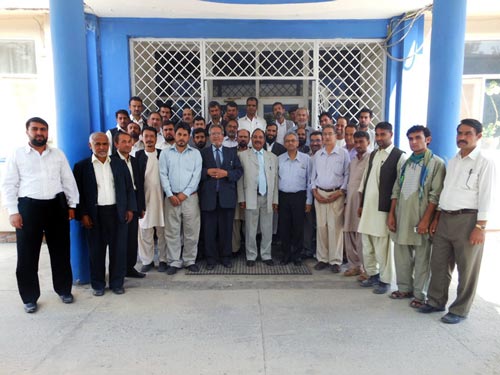
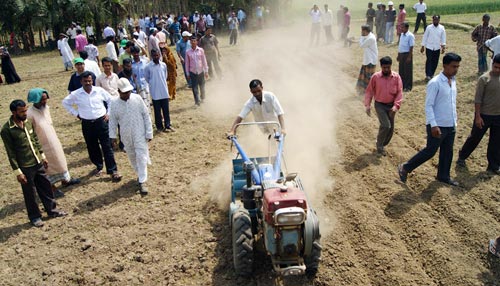 The CIMMYT team in Bangladesh hosted a highprofile field visit on September 1, 2012, for a United States Agency for International Development (
The CIMMYT team in Bangladesh hosted a highprofile field visit on September 1, 2012, for a United States Agency for International Development (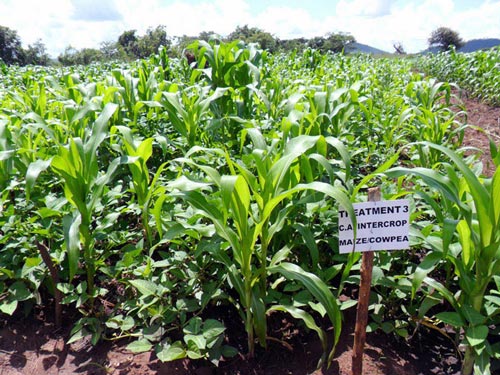 To reduce farm labor, improve soil productivity and crop yields, and contribute towards food security of farming households in the changing climate environment, CIMMYT, the
To reduce farm labor, improve soil productivity and crop yields, and contribute towards food security of farming households in the changing climate environment, CIMMYT, the 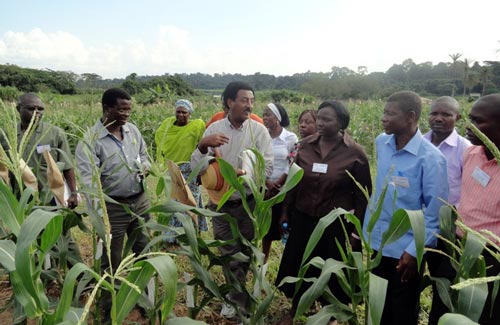 Having experienced CA, both Tembo and Zulu hope that more farmers will adopt the practice. “This project should continue so that others can learn from us that we do things differently now,” she added. Learning about CA has enabled Tembo to lessen the challenges her family faces, especially the tedious labor in preparing the field. Zulu is proud to see that other farmers admire what they see on his farm.
Having experienced CA, both Tembo and Zulu hope that more farmers will adopt the practice. “This project should continue so that others can learn from us that we do things differently now,” she added. Learning about CA has enabled Tembo to lessen the challenges her family faces, especially the tedious labor in preparing the field. Zulu is proud to see that other farmers admire what they see on his farm.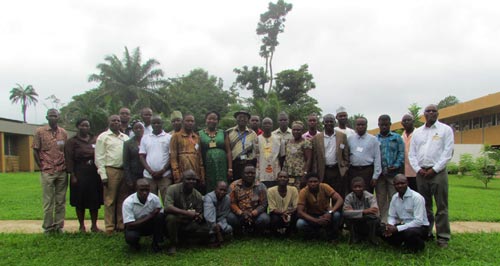
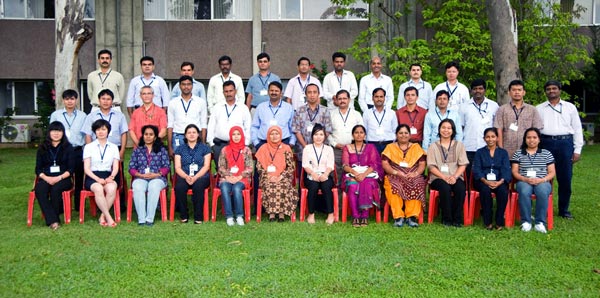
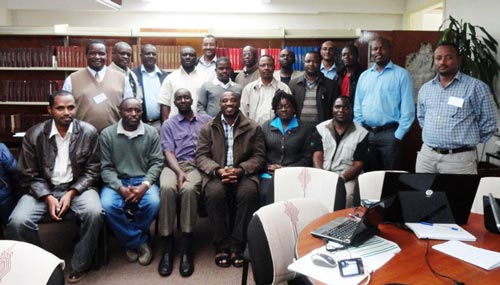 The fourth workshop on monitoring and evaluation (M&E) organized by the
The fourth workshop on monitoring and evaluation (M&E) organized by the